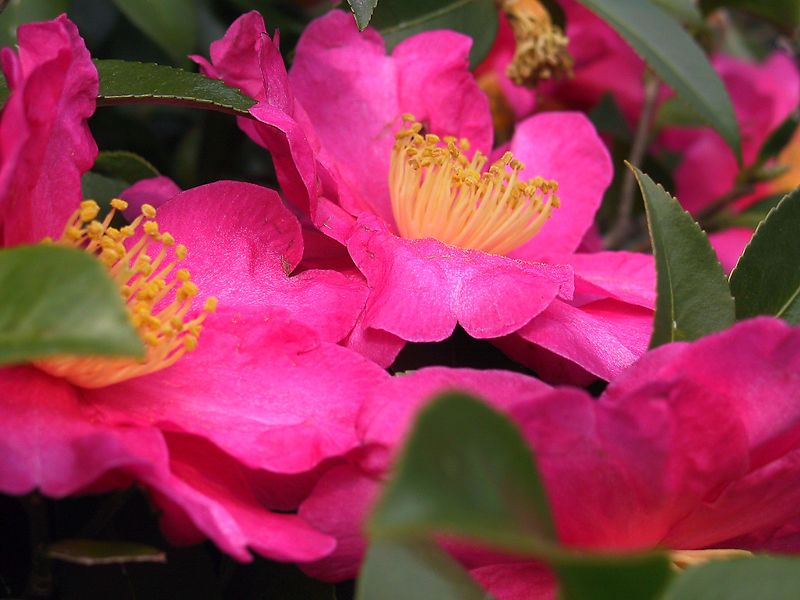settings
The Idiot vocabulary
no artists mentioned
help & settings
[x]
-
Camellia
-
► definition
Definition:a genus of flowering plants in the family Theaceae. They are found in eastern and southern Asia, from the Himalayas east to Japan and Indonesia. There are 100–300 described species, with some controversy over the exact number. There are also around 3,000 hybrids.[...]Camellia sinensis, the tea plant, is of major commercial importance because tea is made from its leaves. The species C. sinensis is the product of many generations of selective breeding in order to bring out qualities considered desirable for tea.text from Wikipedia, licensed under Creative Commons - Attribution - Sharealike photo: By junichiro aoyama from Kyoto, Japan - Camellia sasanqua, CC BY 2.0,
photo: By junichiro aoyama from Kyoto, Japan - Camellia sasanqua, CC BY 2.0,
► uses
Uses:
scraping together all the money I possessed, I ordered a superb basket of camellias and had it sent to Mme. Swann.
Marcel Proust. In Search of Lost Time [volume 2]
---
The birds all twitter up in a huff when they see me coming, making the camellia bush rattle. Last spring Miss Celia was always nagging at me to take those flowers home. But I know camellias. You bring a bunch inside, thinking how it's so fresh it looks like it's moving and as soon as you go down for a sniff, you see you've brought an army full of spider mites in the house.
Kathryn Stockett. The Help, p.356 (2009)
---
The poor fellow was beside himself to get her a bouquet of camellias. Countess Sotski and Sophia Bespalova, as everyone knew, were coming with white camellia bouquets. Anfisa wished for red ones, for effect. Well, her husband Platon was driven desperate to find some. And the day before the ball, Anfisa’s rival snapped up the only red camellias to be had in the place, from under Platon’s nose, and Platon—wretched man—was done for.
Fyodor Dostoyevsky. The Idiot (1887)
---
In wire pens that surrounded the dance flour and among large Amazonian camellias there were herons of different colors,
Gabriel García Márquez. One Hundred Years of Solitude, p.423 (1970)
---
oil paintings and pastels and watercolors strung there. Although the style of each varied in crudity, the subjects of the paintings were relatively similar: camellias floating in bowls of water,
John Kennedy Toole. A Confederacy of Dunces (1980)
